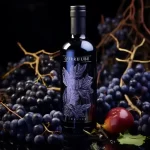Discover the world of Mead, an ancient honey wine that has fascinated cultures throughout history. Uncover its history, brewing process, varieties, and tips for enjoying this unique beverage. Explore Mead, the nectar of the gods.
Introduction: Unraveling the Mystique of Mead
Welcome to the captivating world of Mead, an enchanting elixir that traces its roots back to ancient civilizations. Also known as “honey wine,” Mead holds a prominent place in human history, celebrated in myths and folklore, and cherished for its alluring taste and cultural significance. This comprehensive guide will take you on a journey to explore the magic behind Mead, from its intriguing history and the art of Mead-making to the diverse varieties available today. Join us as we delve into the fascinating realm of Mead, unlocking its secrets and uncovering the wonders of this ancient honey wine.
What is Mead? Unraveling the Basics
Mead, often referred to as the “nectar of the gods,” is an alcoholic beverage made from fermenting honey with water and sometimes other ingredients like fruits, spices, or grains. As one of the oldest alcoholic drinks, Mead has transcended time and cultures, with evidence of its existence dating back thousands of years. This drink carries a rich historical significance, with mentions in Norse mythology, ancient Greek tales, and even ancient Chinese writings. Today, Mead enjoys a resurgence in popularity, attracting enthusiasts seeking unique and artisanal beverages.
The Rich History of Mead: From Ancient Origins to Modern Revival
Mead’s history intertwines with human civilization, leaving a trail of stories and traditions across diverse cultures. From the ancient Greeks, who believed Mead to be the drink of the gods, to the Vikings, who associated it with strength and valor, Mead has been woven into the tapestry of folklore and rituals. It found its place in medieval banquets and Renaissance feasts, symbolizing celebration and prosperity. With the advent of other alcoholic beverages, Mead’s popularity waned, but it never faded into oblivion. Today, there is a resurgence of Mead-making, thanks to craft brewers and Mead enthusiasts worldwide.
Unearthing the Art of Mead-Making: The Brewing Process
From Honey to Glass
Crafting Mead is a true art form that requires passion, patience, and precision. The process starts with gathering the finest honey, a crucial ingredient that shapes the flavor profile of the final product. Beekeepers play a pivotal role in providing honey that reflects the unique characteristics of the region’s flora. Once the honey is acquired, the Mead-making process involves fermentation, aging, and, in some cases, flavoring with fruits or spices. The duration of aging can vary, from a few months to several years, leading to distinct styles and tastes.
Varieties of Mead: A Spectrum of Flavors
Melomels, Cyser, Metheglins, Oh My!
Mead’s versatility shines through its various styles and flavors. The classic form of Mead is often referred to as “Traditional Mead,” which highlights the essence of honey with minimal additional ingredients. Beyond that, there are intriguing varieties like Melomels, where fruits bring fruity notes, Cyser, which combines apples and honey, and Metheglins, where spices offer a unique twist. Each style has its own story to tell, making Mead a treasure trove for taste explorers.
Mead Around the World: Embracing Cultural Diversity
Mead’s Global Expedition
Mead’s allure has transcended borders, finding its way into diverse cultures across the globe. From the European heartlands to the far reaches of Asia, each region has its own take on Mead, reflecting local flavors and customs. Vikings’ Mead, known as “mj?ðr,” differed from the Chinese “mi jiu,” and both are distinct from the Polish “miód pitny.” By exploring Mead from different cultures, we gain insight into the role this beverage played in shaping societies and traditions.
The Renaissance of Mead: Modern-Day Resurgence
Demystifying the Mead Renaissance
In recent years, Mead has experienced a remarkable renaissance, fueled by a growing interest in craft beverages and ancient traditions. Artisanal Meaderies have sprung up worldwide, offering unique Mead varieties that appeal to contemporary tastes. Mead’s revival is driven by its connection to history, authenticity, and the allure of an extraordinary drink waiting to be rediscovered.
Mead and Food Pairing: A Match Made in Heaven
Unlocking the Secrets of Culinary Companionship
Mead’s diverse flavor profiles open up exciting possibilities for food pairings. Whether you seek the perfect combination with cheese, charcuterie, seafood, or desserts, Mead harmonizes with an array of dishes. Understanding the intricacies of Mead and food pairing can elevate your culinary experiences to new heights.
The Magic of Mead: Myth, Legend, and Folklore
Mead in Myths: Tales of Gods and Heroes
Throughout history, Mead has been woven into myths and legends, often associated with gods, heroes, and love stories. From the poetic inspiration it provided to Norse gods to the potion of love in Welsh folklore, Mead’s presence in mythology adds an enchanting layer to its allure.
Mead Tasting 101: Savoring the Experience
Embarking on a Sensory Adventure
Tasting Mead is an experiential journey that engages all your senses. Appreciating its color, aroma, and mouthfeel while savoring the distinct flavors is akin to unlocking the essence of this ancient elixir. A guide to tasting Mead can enhance your appreciation for this complex and fascinating beverage.
Mead Beyond Borders: Exploring Global Brands
Unveiling World-Renowned Meaderies
The world is teeming with Meaderies, each with its own story and craft. We’ll take you on a tour of some renowned Meaderies from different corners of the globe, providing insight into their unique brewing methods and the remarkable Mead they offer.
Mead and Health: Unraveling the Benefits
Demystifying the Nectar’s Health Aspects
Beyond its delicious taste, Mead has also been associated with various health benefits in traditional medicine. We’ll explore the potential positive effects of moderate Mead consumption, the nutritional value of honey, and the role of antioxidants in Mead.
Brewing Mead at Home: A DIY Adventure
Unleashing Your Inner Mead Maker
For adventurous souls, brewing Mead at home is an exciting endeavor. We’ll walk you through the steps, tips, and tricks to create your own delectable Mead, customized to your taste preferences.
Mead and Celebrations: A Toast to Life’s Moments
Raising the Chalice of Mead
Mead’s historical association with celebrations and ceremonies has endured through the ages. We’ll explore how Mead can enhance your special occasions, symbolizing love, unity, and joy.
Mead Festivals and Events: A Gathering of Enthusiasts
Joining the Mead Community
Mead festivals and events bring together Mead enthusiasts, makers, and curious individuals. We’ll uncover some of the most celebrated gatherings where you can immerse yourself in the world of Mead.
The Mead Renaissance Online: Exploring Virtual Tasting
Connecting with Mead Aficionados Worldwide
The digital age has expanded the horizons of Mead exploration, offering virtual tastings, online forums, and Mead appreciation events. We’ll guide you through the digital landscape of Mead, where connections and knowledge transcend borders.
Mead Merchandise: Embracing the Mead Culture
Adorning Yourself with Mead Delights
From Mead-inspired clothing and accessories to Mead-related home decor, we’ll introduce you to a world of Mead merchandise that lets you wear your passion proudly.
The Future of Mead: Innovations and Possibilities
Paving the Path Ahead
As the Mead Renaissance continues, the future holds exciting possibilities. We’ll discuss the potential innovations, trends, and directions Mead might take in the coming years, inspiring the Mead enthusiasts of tomorrow.
FAQs
- What is the origin of Mead?
- Mead’s origin can be traced back to ancient civilizations, with evidence of its existence found in cultures worldwide, from the Greeks and the Vikings to the Chinese and the Polish.
- Is Mead sweet or dry?
- Mead can vary from sweet to dry, depending on the amount of residual sugar left after fermentation. Some Meads are sweet and honey-forward, while others are drier with a crisp finish.
- Can vegans consume Mead?
- Yes, most traditional Meads are vegan-friendly as they are made solely from honey, water, and yeast. However, certain flavored Meads might contain non-vegan ingredients like milk or honey.
- What foods pair best with Mead?
- Mead pairs well with a wide range of foods, including cheese, grilled meats, seafood, fruits, and desserts. Experimenting with different pairings can lead to delightful culinary discoveries.
- Does Mead age like wine?
- Yes, Mead can age and develop complexity over time, much like wine. Some Meads, especially those with higher alcohol content, can benefit from aging in the bottle.
- Is Mead gluten-free?
- Yes, Mead is gluten-free as it is made from honey and water, without any grains.
Conclusion: Embark on Your Mead Journey
As we conclude our odyssey into the world of Mead, we hope you feel inspired to explore this ancient honey wine for yourself. From its historical significance to the diverse flavors and cultural connections, Mead offers a delightful adventure for all who seek its magic. So, raise your glass and toast to the timeless wonder of Mead, the nectar that connects us to the past and enriches our present with the spirit of celebration and camaraderie.
Cheers to Mead, the drink that has withstood the test of time, and may your Mead journey be filled with unforgettable moments and delectable discoveries.









